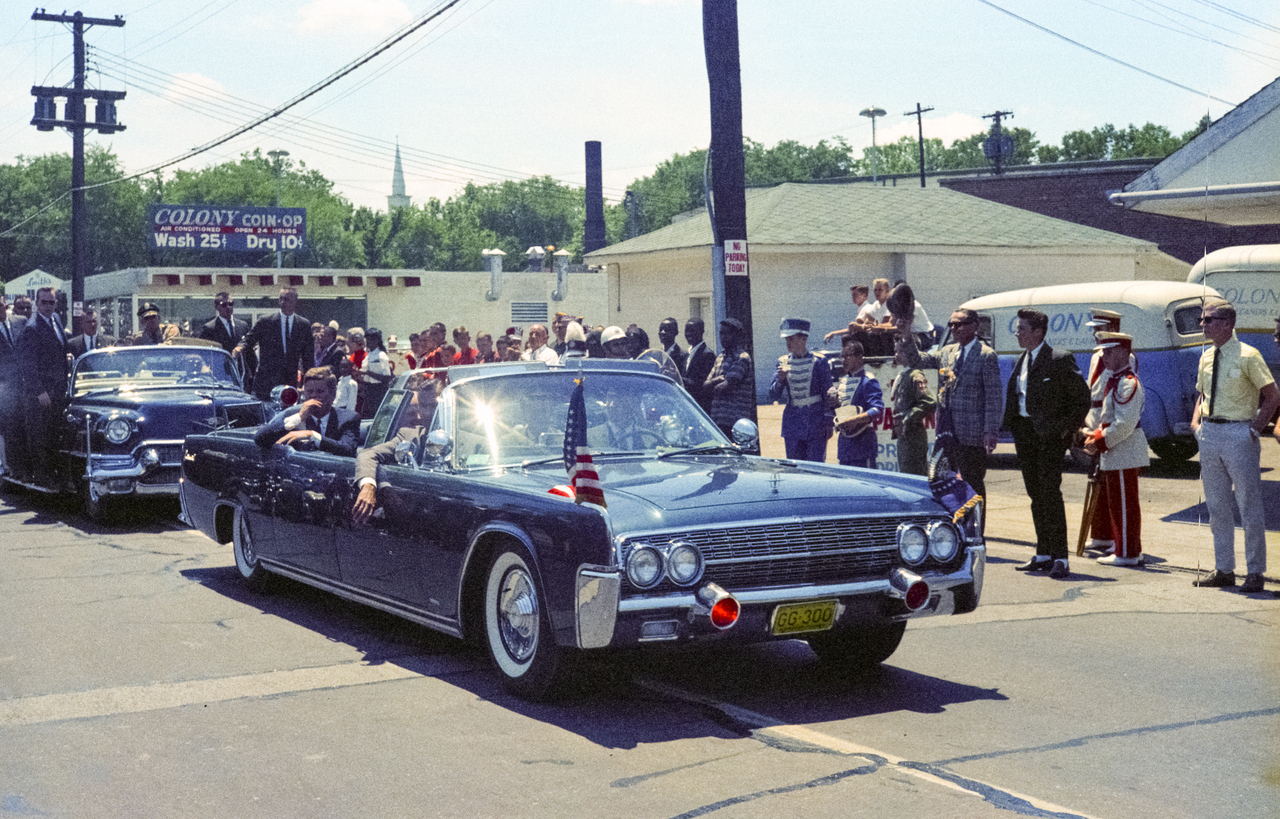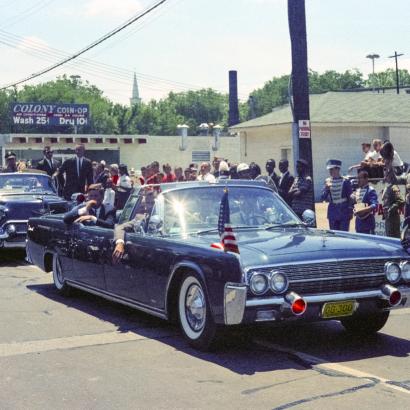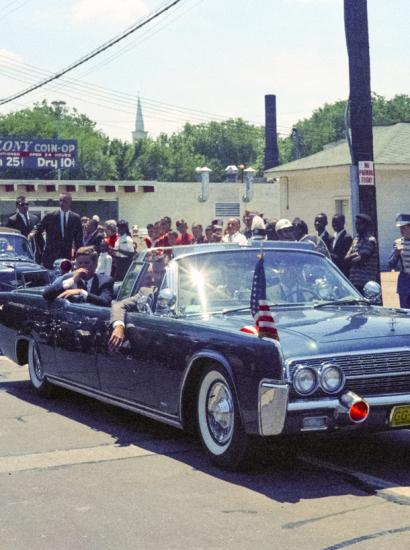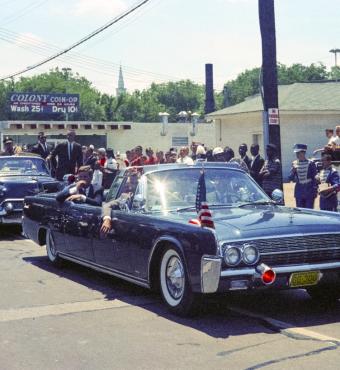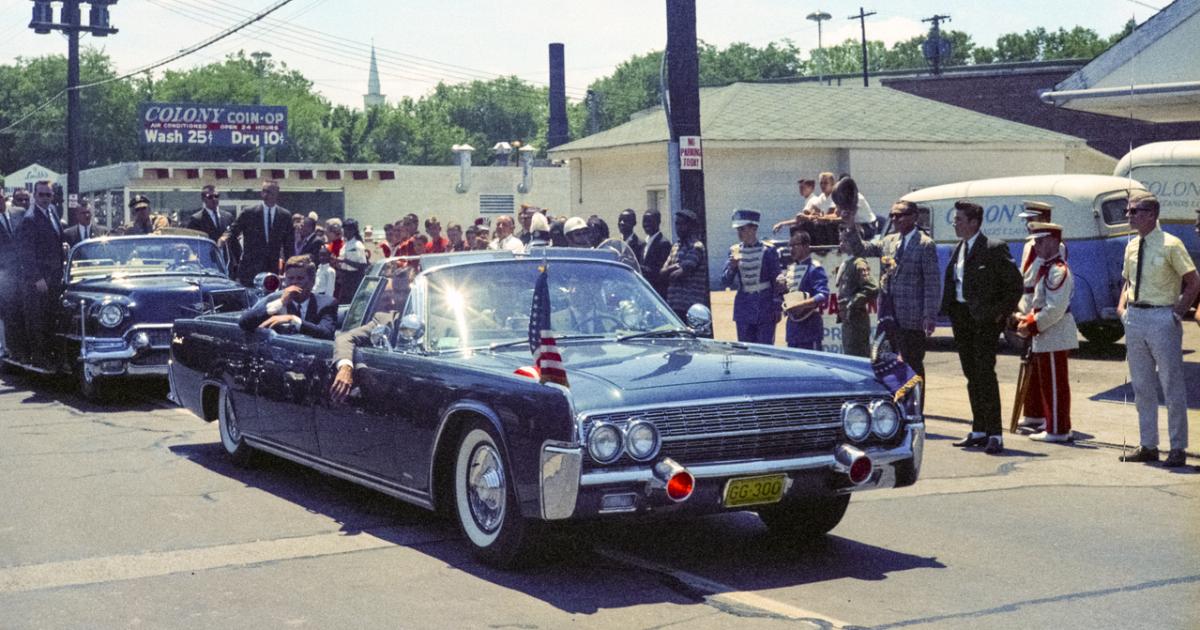The unlikely town of Butler, Pennsylvania, has given us the first would-be presidential assassination since the attempt on Ronald Reagan’s life in 1981. Thomas Matthew Crooks is no longer alive to tell his story, and investigators are still trying to understand why he fired at former president Donald Trump. If we compare Crooks to Lee Harvey Oswald, the only successful presidential assassin since an anarchist shot William McKinley in 1901, we find no signs so far of the fatal mix of ideology and arrogance that compelled Oswald to target John F. Kennedy in 1963. But there are similarities—among them, a role for conspiratorial thinking in Americans’ reaction to the crimes.
The events in Butler and the intense scrutiny of the attack on Trump bring back into vivid focus my own thoughts of November 22, 1963.
As Secret Service agents drove me from Norman to Oklahoma City less than twenty-four hours after the fatal shots were fired in Dallas, I, a “known associate” of Oswald, was confronted for the first time with the nation’s urgent question: did “my friend” Lee act alone? More than sixty years later, the fact that Oswald fired the fatal bullet seems to be widely accepted. Oswald himself claimed, in his corridor interviews in the Dallas police station, that he was a “patsy,” hinting that sinister forces were involved and had used him. I doubt that he would have stuck to this claim had he lived to face judgment. No “patsy” makes his way into the history books, where Oswald believed he belonged.
Some have used Oswald’s statement to allege complicated plots hatched by the CIA, the Mafia, Cuba, the USSR, or even me and my father, who came to know Oswald and his wife, Marina, upon their return to Texas in June 1962. In November 1963, the country needed an answer to the conspiracy question. There was no time to lose. The USSR had its forces on high alert, expecting a possible military coup in Washington if Soviet agents were blamed for JFK’s death. The Warren Commission was created within a week of the assassination.
The commission’s 888-page report concluded that Oswald acted alone—a conclusion only a third of the US public now shares. Will similar suspicions of conspiracy persist with respect to the Trump assassination attempt?
A truly lone gunman
In that car on November 23, 1963, I had already in my mind rejected Oswald as a part of a conspiracy. The reason was simple. Lee was not a follower, and no one in his right mind would follow him. As a telling illustration, his one effort to lead (recruiting for Free Cuba on the streets of New Orleans) collected just one recruit: A. J. Hidell, a name that happened to be Oswald’s alias. Typical of the Lee Harvey Oswald I knew.
Crooks, a twenty-year-old loner, led a less eventful life than Oswald. Unlike Oswald, he has apparently left behind few clues to what drove him. Nor was Crooks an Oswald copycat, other than in his use of the Internet to research the distance between Oswald’s perch and the Kennedy motorcade. Both Crooks and Oswald were “low tech” assassins deploying standard equipment and weaponry obtained legally. Adjusted for inflation, Oswald spent the equivalent of a few hundred dollars on his mail-order rifle and revolver, about the same as Crooks’s outlays. Crooks’s standing narrative suggests a lonely young man working at a lackluster job with few hopes for the future, which echoes Oswald’s life in some ways. Oswald, however, had extravagant dreams and schemes that were constantly being thwarted by the system. He would show “them” one day.
For both Oswald and Crooks, assassination was not spur of the moment. Oswald’s planning for the assassination in Dallas of retired Army general Edwin Walker—ultimately unsuccessful—began nine months before he shot Kennedy. Crooks had been ordering weapons and explosive materials for a year.
But parallels between Oswald and Crooks are limited. Crooks excelled at school; dyslexic Oswald spelled poorly and could not punctuate. Oswald grew up with a mother who had a limited grasp on reality. (She insisted her son be buried at Arlington National Cemetery as a hero.) Crooks was brought up in a two-parent household, in which his normal school and family life underscores the reality that there is no way to predict who might become a presidential assassin.
The eyewitness accounts, video, and forensics in the Trump case make it clear Crooks was a lone gunman. There is no “grassy knoll” in his story.
Crooks showed no signs of delusions of grandeur. Whereas Oswald was a pressure cooker building for an explosion, Crooks appears, to me, to be among the loners who randomly shoot up schools and public gatherings as a means of suicide and perhaps of gaining passing notoriety.
Oswald’s motive for killing the president was evident, at least to me. As a self-identified Marxist pundit with a dismissive wife, Lee seethed that he worked for $1.25 per hour and no publisher wished to publish his “Historic Diary.” For Lee, the grass was always greener on the other side of the fence, and society was preventing him from reaching it. In 1959, he had defected to the Soviet Union—volunteering to help the USSR with his supposed voluminous knowledge gained in the US Marines. There he met and married Marina. Oswald then left the USSR in disgust two years later. In the weeks before November 22, 1963, he had returned to Dallas from a visit to Mexico City deeply despondent that his planned move to Cuba, and a new life helping Castro in the revolution, was not going to happen. He then learned that the president’s motorcade would pass by the building where he worked—an incredible opportunity for the place in the history books where Oswald considered he belonged.
Who knew?
Thousands of books, virtually all peddling conspiracies, continue to besiege the Warren Commission’s “no conspiracy” finding. In both the Trump and Kennedy cases, the victims came to the shooters. Oswald merely had to hitch a ride (his rifle disguised as a curtain rod) to downtown Dallas, where he took up position in his sniper’s nest. In Crooks’s case, the young man wandered freely around the Butler fairgrounds; eventually he did attract the attention of law enforcement, but there was no response in time. Rally-goers shouted that there was a man on the roof, but Trump’s security allowed him on stage anyway. As congressional investigations gear up, the egregious errors of those guarding Trump—the Secret Service and local law enforcement—are certain to feed new conspiracy theories. And just as some believe that the circumstances leading Oswald to the sixth-floor window in Dallas could not have been due to chance, some Trump supporters will interpret the security breaches in Butler as part of a deliberate plan to get rid of their candidate. Some of the conspiracy-minded even suspect that Trump arranged the shooting himself.
In JFK’s case, the Secret Service was incensed that the Dallas FBI had not neutralized Oswald, a known troublemaker and avowed communist who was being investigated as a possible Soviet spy. After the assassination, an agent in the FBI’s Dallas office destroyed a threatening note Oswald had left for the bureau some weeks before. The most significant failing in the case, however, belongs to the Dallas police, who gave nightclub operator Jack Ruby, who killed Oswald when he was in custody, carte blanche to police headquarters.
As Norman Mailer wrote in his 1995 book Oswald’s Tale, Oswald himself held the key to the assassination. He had all the telltale characteristics of an assassin focused on the murder of a public figure: a motive, persistence, an ability to manipulate, the means, and the “soul of a killer.” These were already clear in his plot to kill his original target, Edwin Walker, after weeks of planning. Had he killed Walker, Lee would have died in jail, Kennedy would have lived to serve two terms, and history would have been different.
The Oswald I knew was indeed a little man, but with delusions of greatness, inculcated in him by his unbalanced mother. He lurched from one scheme to another, but none of his ideas worked, no matter how hard he tried. Life in Dallas had proven to be a dead end; his wife now had Russian-speaking friends and was living apart. He was about to lose her, as I learned in our last meeting at our house exactly one year before the assassination.
Little men do not change history. Therefore, many conclude that there must be some sinister force that turned Oswald into a historical figure. Oswald’s life was an open invitation to believe in conspiracy theories: he was an avowed communist/Marxist, he had tangled with the Dallas FBI, in Mexico City he had met with Soviet officials. He was in correspondence with the American Communist Party and with the Soviet embassy in Washington. If Oswald was a mere pawn, who was pulling the strings? Yet this greatest of all imagined conspiracies would have required a team of assassins, all of whom, remarkably, took this greatest of secrets to their graves.
Climates of hate
Both the Trump and the Kennedy shootings were carried out in a climate of hate. Influential right-wing elements in Dallas took out advertisements that Kennedy was not welcome, and some of the president’s inner circle warned him against going to Dallas. Crooks may have seen billboards or social-media messages warning that Trump is an existential threat to democracy. At this point, we know too little about Crooks to judge whether he was affected by such messaging. In the Kennedy case, though, it is highly unlikely that any hostility in Dallas motivated Oswald to kill Kennedy. General Walker was a strident anticommunist, but Kennedy was a centrist of sorts. Lee, in fact, had told his wife that he tried to kill Walker because he was a threat to mankind like Hitler. JFK was different: in my presence, both Lee and Marina—especially Marina—expressed admiration for JFK and his attractive family.
Trump, like Walker, survived his narrow miss, but in a climate of hate more profound than that of Dallas in 1963. In the midst of a bitter, unpredictable political campaign, the Butler attack is bound to be fertile soil for conspiracies.







